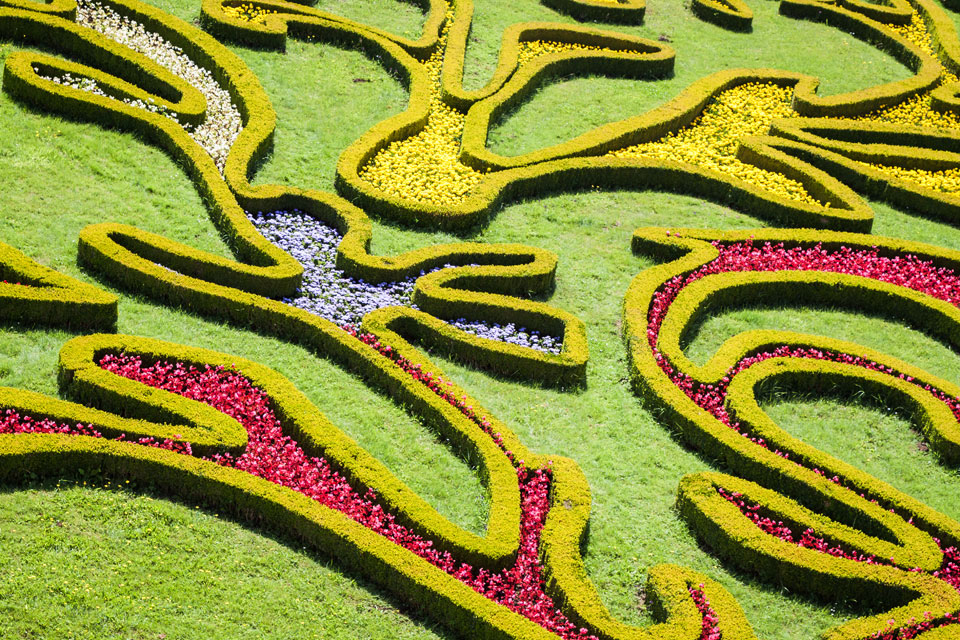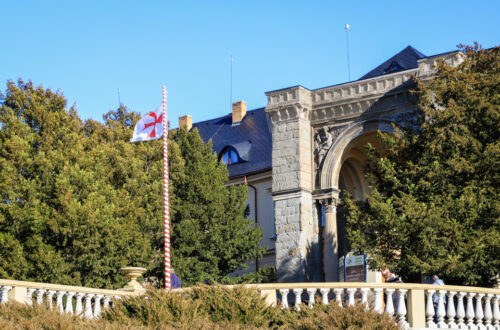Flower Garden in Kroměříž
The Flower Garden in Kroměříž is an exceptional garden which belongs to the world’s most important examples of garden art. It’s not huge but it represents a transition between Italian late renaissance gardens and French baroque and classicist gardens and although it’s more than three hundred years old, its concept has been preserved to this day.
As I mentioned in my previous post about the Archbishop chateau in Kroměříž, in 1998 the whole complex of the chateau and its gardens including the Flower Garden was added to the UNESCO List of World Cultural and Natural Heritage.
The garden was established in 1665 – 1675 by bishop Karel II of Lichtenstein-Castelkorn, the concept of the garden was elaborated and supervised by Italian architects. The garden was built on originally swampy ground outside the town walls and became part of the town rebuilt after having been damaged during the Thirty Years’ War.
In 1840 – 1845, a cold greenhouse, tropical greenhouse, residential building and administration building were added.



There are two dominant features in the garden: an octagonal rotunda and a 244-metre-long colonnade.
The rotunda is situated at the centre of the garden. Inside, it is beautifully decorated with frescoes and stucco. At the end of the nineteenth century, a unique Foucault pendulum (a simple device demonstrating rotation of the Earth) was installed in the middle of the rotunda, drawing its trajectory into soft sand placed on a stone table. With its 25-meter-long wire, it is the biggest model of the Foucault pendulum in the Czech Republic.
Just a note here. There are three types of the garden’s entrance fee. The basic fee lets you move freely in the garden’s premises but you can’t enter the rotunda. Then there is a fee for a guided tour of the garden itself, and finally there is a fee for a guided tour of both the garden and rotunda. We had just the basic fee so we didn’t visit the insides of the rotunda… but if I ever came back, I would like to see it and also to hear more about the garden.
The colonnade was built as one side of the garden and originally it was used as the entrance into the garden. Its gallery is decorated with 44 statues of ancient gods and mythical and historical figures placed in niches inside and with 46 busts placed on the pillars outside. (Some say the busts are 44, but well, I didn’t count them and I guess the difference doesn’t matter that much. Just for you to know.)
Here are three randomly selected statues: Niobe, Sibyl and Actaeon.
The woman on the left is Niobe. She is known from Greek mythology as a happy mother of seven sons and seven daughters who loved her family but became too proud of it. She insulted goddess Leto, the mother of Apollo and Artemis, who punished her by having all her children killed. At the sight of the dead sons, her husband killed himself too. Niobe herself was turned into a weeping stone statue. There are more versions of the story but the core stays the same – don’t take your happiness for granted and don’t boast about it or you may lose it.
The woman in the middle is Sibyl, she’s a figure from ancient Greece. I thought that Sibyl was a name of one particular woman providing prophecies in ancient Delphi but I found out that Sibyl was a common name for women that the ancient Greeks believed were oracles, there were about ten most famous. Until later, they were known rather by the places and shrines where they were uttering their prophecies than by their actual names.
The man on the right is Actaeon, another figure from Greek mythology. He was a great hunter but he insulted Artemis, the goddess of the hunt, and she transformed him into a stag. The stag was traced up and torn to pieces by the hunter’s own hounds which didn’t recognise him. The reason of the goddess’s wreath is not certain but one version says that Actaeon entered a cave and saw her naked and the goddess felt insulted and transformed him so that he couldn’t talk about what he saw.
41 more and you will know them all…


They say that if you utter a word in a low voice at one end of the colonnade, it can be clearly heard at the other 244-metre-faraway end but I didn’t try so I can’t tell whether it’s true or not.
At the right end of the colonnade, there are stairs which take you on the roof of the colonnade constructed as a terrace. There you can admire the ornamental flower beds from above, it’s a beautiful view.



Before I go, one last photo from behind the scenes of a greenhouse where flowers are grown for the needs of the garden. I find it beautiful in its own way…









